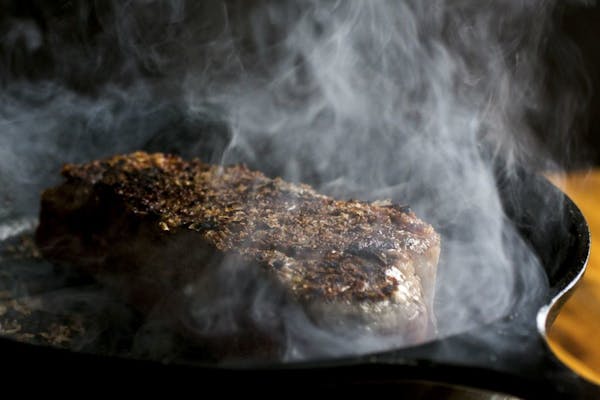Tips for cast-iron pans
To prepare a new pan: Remove oils from packaging by heating pan on the stovetop. Use a paper towel to wipe away any oils. Cool pan and wash it with water, dish soap and a scrub brush (this should be the only time soap is used with the pan). Then season the pan (see below). Dry thoroughly. Note that some pans come preseasoned (follow package directions).
To season a pan: Wipe it with vegetable oil — including exterior, bottom and handles — and put it in a 500-degree oven and leave it there until it smokes (you may want to put pan on a baking sheet to catch any oil that drips off). Remove the pan from the oven and cool it slightly before rubbing more vegetable oil on it. When completely cool, wipe off any oil.
To fix a rusty pan: If there is a little rust, use a paper towel with vegetable oil to rub it off. For a seriously rusty pan, use a metal scrubber. Then dry the pan thoroughly and season it.
To prevent rust: Always dry the pan quickly and thoroughly. If desired, pop it into a hot oven or place it on a burner on low to dry it out. Store pan without a cover on top, which can trap moisture.
How to clean a pan: This is easier to do when the pan is warm. Using a nylon scraper, remove any bits and pieces of food in the pan, and rinse the pan in hot water. Never use a dishwasher. If necessary, add boiling water to help remove food particles. If food regularly sticks to the pan, it may need to be reseasoned. Do not use soap. If that concerns you, rinse the pan in boiling water. Ifcooking odors remain, put the clean pan in a hot oven for about 15 minutes to clear the smell.
How to cook with cast iron: Unless the recipe says otherwise, heat the pan to medium or medium high before adding food. To sear food, the pan should be smoking hot.
Advantages of cast iron: It's inexpensive, heats evenly and is nonstick when seasoned. The pan can be heated to a much higher temperature than any nonstick pans, and it adds some iron to your diet.

A wild week in restaurants with 4 closings and an opening
The Rolling Stones set to play New Orleans Jazz Fest 2024, opening Thursday

